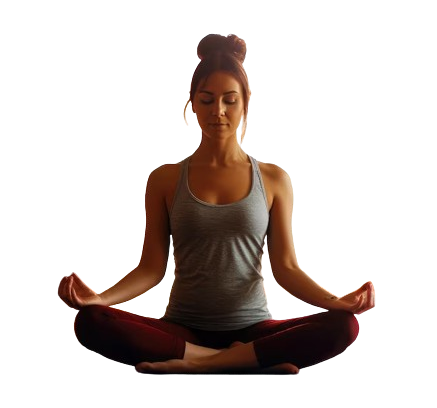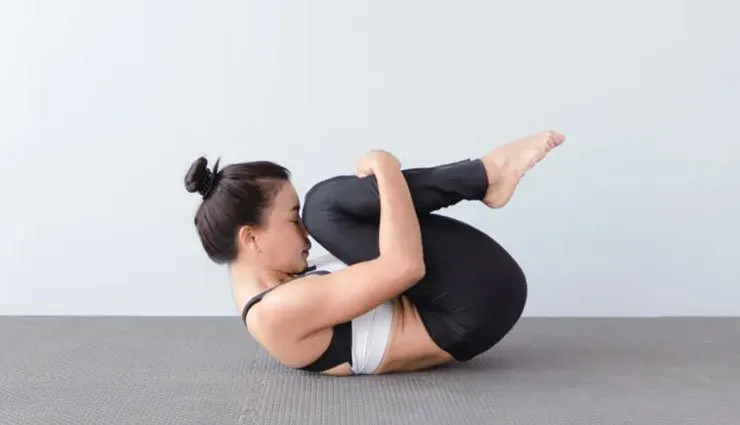On This Page
Yoga Module to Relieve IBS
Yoga Module that Focuses on the Abdominal Region and Helps to Relieve IBS
Stage 1: Start affirmation: Produce OM sound three times and A- U- M sound three times.
Stage 2: Different breathing practices can be done like:
- Shashanka Asana (moon pose breathing)
- Vyaghra Asana (tiger pose breathing)
- Padottanasana (straight leg raise breathing)
Stage 3: Instant relaxation should be done by Shava Asana.
Stage 4: Sthilikaran Vyayama should be done after instant relaxation like twisting, side bending, forward and backward bending, etc.
After this Pawan Mukta Asana should be done.
Stage 5: Instant relaxation should be done by Shava Asana.
Stage 6: Different Asana should be done in sitting, standing, supine and prone positions to focus on an abdominal region like
- Ardha Chakra Asana (half wheel pose)
- Ardha Kati Chakra Asana (half waist wheel pose)
- Trikonasana (triangle pose)
- Vriksha Asana (tree pose)
- Pada hasta Asana (hand to feet pose)
- Paschim Uttana Asana (seating forward bend pose)
- Bhujangasana (cobra pose)
- Matsyasana (Fish pose)
- Sarvanga Asana (shoulder stand)
These asanas can be done gradually.
Stage 7: Instant relaxation should be done by Shava Asana.
Stage 8: Pranayama and Kriya (regulated breathing and cleansing)
- Bhastrika Pranayama
- Sheetali Pranayama
- Sheetkari Pranayama
- Bhramari Pranayama
- Uddiyana Bandha
- Kapala Bhati
Stage 9: Meditation (Dhyana) should be done like OM sound meditation.
Stage 10: Closing affirmation: Produce OM sound three times and A- U- M sound three times.
Yoga and Kriya Module for IBS
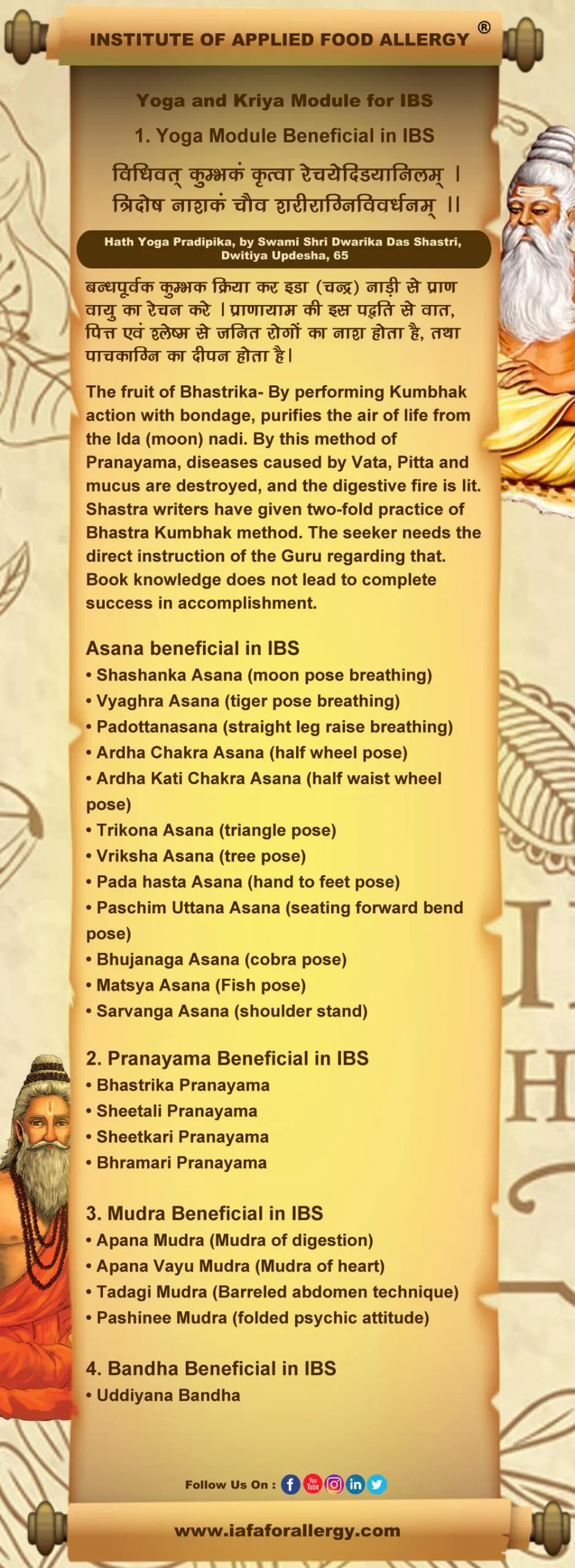
Regulation of Manipura Chakra
What is Manipura Chakra?
The Sanskrit word Mani means “gem’ or ‘jewel’. the word Pura means city. Therefore, the word Manipura literally means the city of gems. It is so called because of the intensity of Pranic energy at this center. In the Gautamiya Tantra, it says, “The Manipura chakra is so called because it is lustrous like a sparkling jewel.” (ch. 34) It is often compared to the dazzling power of the sun, which continually radiates energy to the planets. Manipura Chakra is considered the seat of all fires: digestion, willpower, solar resonance, etc. Contains the power of creation and destruction. Shining, powerful, forceful. Mastery in controlling Manipura Chakra brings freedom from disease, alchemical ability, clairvoyance, and lasting happiness. It is related to Samana Vayu.
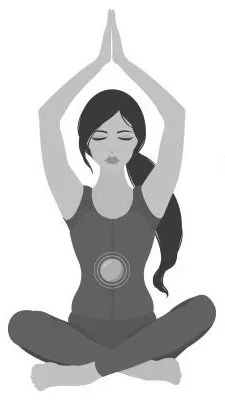
The chakras are Prana centers within the human framework. Chakra means wheels that are correlated with nerve plexuses with surrounding small plexuses. The Shad Chakra of the body controls the Mental as well as physical activity of different autonomic ganglia. In each person, there are myriad chakras. However, only a few main Chakras are utilized in yogic practice to get benefits. These few are the ones that span the full spectrum of man’s being from the gross to the subtle.
These main chakras are:
- Mooladhara
- Manipura
- Vishuddhi
- Swadhisthana
- Anahata
- Ajna
- Sahasrara
Description of Manipura Chakra
tantunà manivat proto yatra kandah susumnayà |
tan näbhi-mandalam cahram procyate manipuraham | 23|| (Goraksha Samhita)
The place where the “bulb” (Kanda) is strung on the Sushumna like a jewel on a thread is the chakra of the navel region called Manipuraka. The word tantu means a thread, like a sutra. That place where the Kanda is placed as if strung on the Sushumna is the navel region and is called the Manipura Chakra.
In the navel center is a blue lotus with ten petals lacing upwards named manipuraka. The petals are decorated with the letters from da to pha (da, dha, na, ta, tha, da, dha, na, pa, pha) which are blue-colored. In the center of the pericarp is a red circle of fire around which is the four-armed fire bija-mantra (ram) as bright as the sun, placed on a ram that has the shape of the swastika. Sitting on the lap of this seed syllable is the form of Maharudra, who is red and smeared with ashes. He is accompanied by his Energy named Lakini, who is blue.
- Location – Navel
- Color- Dark gray, red, blue (also gold)
- Spokes- 10
- Mantra- RAM
- Element- Tejas (Fire)
- Ruling Deities- Rudra, Lakini
- Activity- Vision, Walking
How to Regulate Manipura Chakra and How it helps in curing IBS?
Manipura Chakra is correlated with the coeliac plexus and small plexuses surrounding it. Manipura Chakra lies in the vicinity of Nabhi (umbilicus). In the vicinity of Nabhi, the coeliac plexus is the largest major autonomic plexus that surrounds the coeliac artery and the root of the superior mesenteric artery. According to classical texts of Yoga and Ayurveda, Manipura Chakra is the Sthana (seat) of Samana Vayu which helps in regulating the proper distribution of food, drink, blood, and inhaled material in the body. By regulating Manipura Chakra motility of the Gastrointestinal tract is balanced by regularizing the contraction and relaxation of intestinal muscle fibers. From this, we can conclude regulation of Manipura Chakra affects the physiology and pathology like IBS of abdominal organs. Regulation of Manipura Chakra produces both physical and psychological effects.
Read:- Irritable Bowel Syndrome (IBS): Symptoms, Causes, Diet, Yoga, Ayurvedic Treatment
How to Regulate Manipura Chakra through Yoga?
Manipura Chakra can be regulated by various Yoga procedures like Asana (posture), Pranayam (breathing technique), Bandha, etc. A few procedures that can be used to regulate Manipura Chakra are as follows:
- Bhastrika Pranayama
- Uddiyana Bandha
- Pavan Mukta Asana
What is Bhastrika Pranayama?
In Sanskrit Bhastrika means bellows. A characteristic feature of Bhastrika is the rapid succession of forcible expulsion. Just as a blacksmith blows his bellows rapidly, you should also move your breath rapidly. Bhastrika is a powerful exercise. A combination of Kapal Bhati and Ujjayi makes up Bhastrika. Practice Kapal Bhati and Ujjayi to start with. Then You will find it very easy to do Bhastrika.
For more details regarding Bhastrika Pranayama, click here.
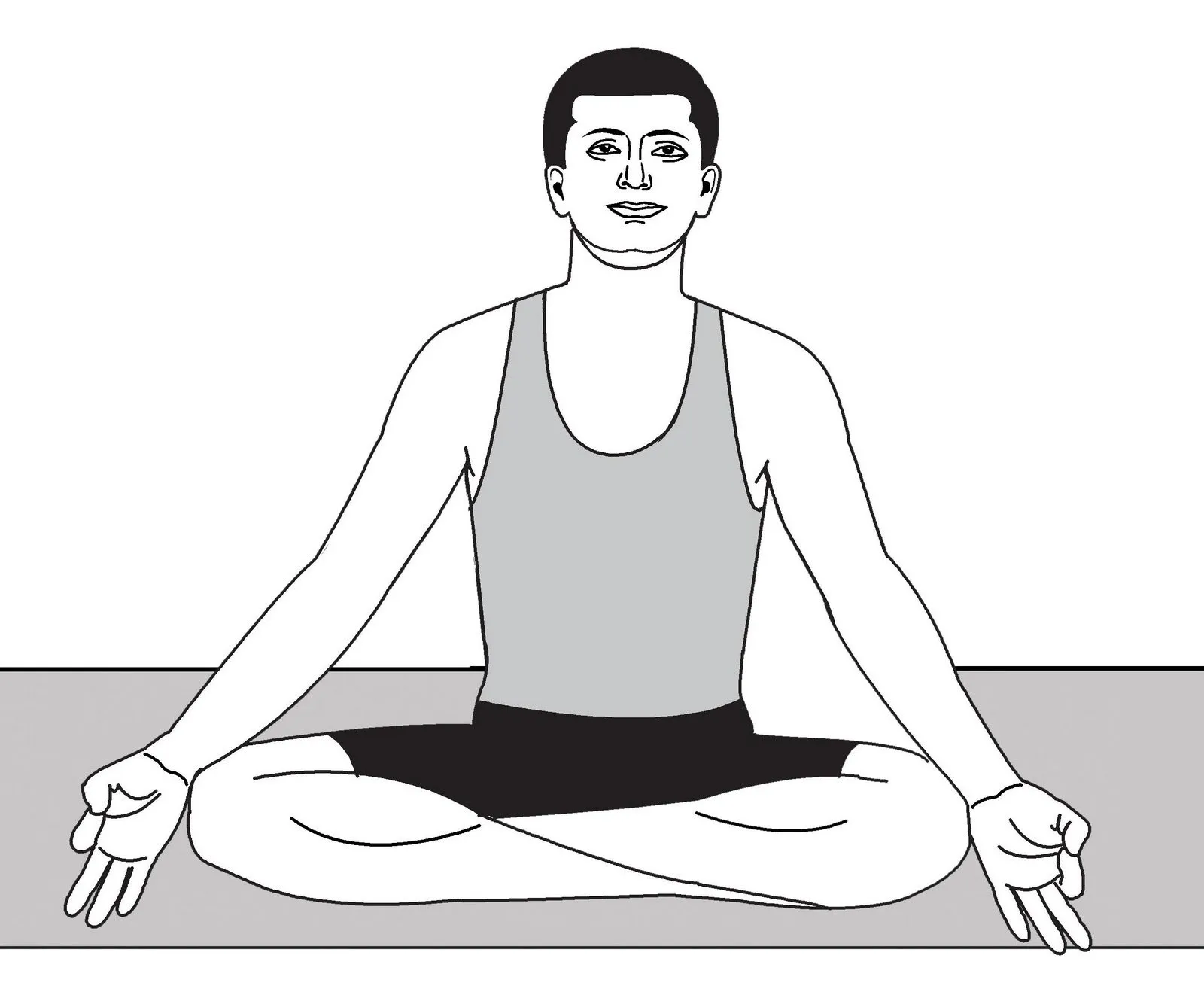
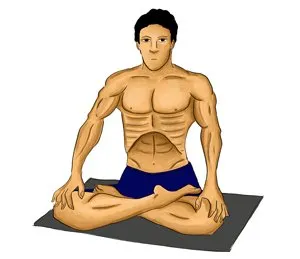
What is Uddiyana Bandha?
The word Bandha means tying a bond, tie, chain, binding, to catch, fix, hold back, clot, lock, redirect, close, shut, etc. It denotes the position which close the body apertures and where the finger helds, together with special hand features. There are three basic Bandhas Mula Bandha, Uddiyana Bandha and Jalandhara Bandha. Together these three Bandha are known as Tri- Bandha.
For more details on Uddiyana Bandha, click here.
What is Pawana Mukta Asana?
It is a wind-relieving or wind-removing pose. Pawan Mukta Asana is a supine pose. The Sanskrit word Pavan means’ wind’ and the word Mukta means “release’ or “free. Hence this is a wind-releasing pose because it is beneficial in removing wind or flatulence from the intestines and stomach. It is beneficial for beginners because, though simple, it gives many benefits. Even the unhealthiest person can do this Asana.
For more information regarding Pawan Mukta Asana, click here.

Mechanism of Action of Pawan Mukta Asana, Bhastrika Pranayama, Uddiyana Bandha on Manipura Chakra
Stimulus by these three procedures results in three actions:
- Abdominal muscle stretching: Stretching of abdominal muscle results in contraction of abdominal muscles which again results in peripheral somatic nerve impulse and visceral muscle contraction. Visceral muscle contraction results in Autonomic nerve impulse generation which ultimately activates the sympathetic nervous system. This helps in the regulation of the Sympathetic- parasympathetic tone of abdominal viscera, regulation of gastrointestinal tract, and peristaltic movements, facilitate proper secretion, regulate contraction and relation of various glands, and regulate the pulsatile movement of the small and large blood vessel.
- Abdominal muscle free: When an abdominal muscle is free, it means abdominal muscles are relaxed which results in visceral muscle relaxation and peripheral somatic nerve impulse vanishing. Visceral muscle relaxation results in Autonomic nerve impulse generation which ultimately activates the Parasympathetic nervous system. This helps regulate the Sympathetic- parasympathetic tone of abdominal viscera, gastrointestinal tract, and peristaltic movements, facilitate proper secretion, regulate contraction and relation of various glands, and regulate the pulsatile movement of the small and large blood vessels.
- Decrease the cortisol levels leading to a counter-regulatory effect to reduce psychological symptoms like stress, anxiety, and depression.
How Do Different Yoga Procedures Affect Chakra?
Each yoga procedure we performed whether it is Asana or Pranayama, etc has two effects i.e localized (Physical response) or generalized (psychological response). Localized effects occur directly by an intensified physical stimulus that affect Chakras (PNS) by the neuro-organic physiological pathway of various Chakras while generalized effects take place occur by an intensified psychic stimulus that affects the Mana (CNS) through the neuro-psychological pathway.

Have A Health Issue?
Consult Online
- Dr. Sahil Gupta (B.A.M.S., M.H.A.)
Ayurvedic Allergy Specialist
CEO & Founder of IAFA®
Balance Pancha Kosha by Yoga Therapy
The Panch Kosha concept was described by Taittiriya Upanishads. In this Upnishada Panch Kosha is defined as inter-twined layers of human existence. The Panchkosha concept is very useful in understanding the modern concept of Psychosomatic disorders. Pancha Kosha is as follows:
- Anaamaya Kosha (physical body)
- Pranaamaya Kosha (vital life force)
- Manomaya Kosha (thoughts)
- Vijnanamya Kosha (intellect of mind)
- Anandmaya Kosha (harmony, Awareness)
Concept of Pancha Kosha to understand IBS and its remedy through Yoga
As we know that IBS is affected by lifestyle, stress, etc, and is considered Adhi Vyadhi (that originates due to conflicts in mind). Due to stress factors, the Varista Prana (vital life force) is affected which by balancing the breath causes dysfunction in Pancha Kosha (five channels of life force). The autonomic nervous system is disturbed due to this which heightened bowel contractility. This result vitiates Samana Vayu which is responsible for balancing Prana, Apana Vayu, and responsible for digestion. Vitiation of Samana Vayu results in Ajirna, Atijirna, and Kujirna (non-digestion, over digestion, and wrong digestion). All this results in various abdominal problems like epigastric pain, hyperacidity, gastric reflux, etc. Increased peristaltic movements lead to Atisara and excess saccular contraction leads to constipation which ultimately results in IBS. This panch kosha disturbance mainly Manomaya, Anamaya, and Pranamaya kosha can be co-related with stress-induced brain-gut axis dysfunction. The yoga module mentioned above can be used to balance Panch Kosha.
Mudra for IBS
Mudra word is used to signify a gesture, a mystic position of the hands, even a symbol, etc. Practicing the different types of Mudras for health I considered good as it provides physical, mental as well as spiritual benefits. Mudra procedures are also beneficial in IBS to relieve various symptoms like constipation, anorexia, etc.
Different Mudra that can be used for IBS are as follows:
- Apana Mudra (Mudra of digestion): For more information regarding Apana Mudra, click here.
- Apana Vayu Mudra (Mudra of heart): For more information regarding Apana Vayu Mudra, click here.
- Tadagi Mudra (Barreled abdomen technique): For more information regarding Tadagi Mudra, click here.
- Pashinee Mudra (folded psychic attitude): For more information regarding Pahinee Mudra, click here.
References
- Jan K. Brzezinski, Yoga Trangini, A rare commentary on Goraksha Samhita, Published by Himalayan Yoga publication trust, First edition, Delhi, 2015.
- B. K. S. Iyengar, Light on Pranayama.
- Swami Dwarika Nath Shastri, Hath Yoga Pradipika, reprint 2009, Chaukambha Vidya Bhavan.
- Acharya Shri Nivasa Sharma, Gherand Samhita, first edition 2006, Choukambha Vidya Bhavan.
- Kasper, Braunwald, Fauci, Hauser, Longo, Jameson. HARRISON’S PRINCIPLES OF INTERNAL MEDICINE, Volume II, 16th Edition page 1789, McGraw Hill.
- Pragya Singhal. Ayurvedic Perspective of Irritable Bowel Syndrome: A Didactic Review. AAM. (2016; 5(1- 2): 24 -32.
- Archana, Bhurke & Bhurke, Laxman. (2016). GRAHANIROGA VIS-A-VIS IRRITABLE BOWEL SYNDROME: A REVIEW. International Journal of Innovation Science. Volume II.
- Gupta *Alka, Awasthi H, Tripathi J. EFFECT OF MANIPURA CHAKRA YOGA ON VATIKA GRAHANI (IBS) PATIENTS. AYUSH. 2015 Dec. 8
- Byadgi PS, Clinical evaluation of the modified Shirodhara procedure; KukshiBasti in the management of Pakwashayagatavata (IBS) ILARP 2011, 2 (5) 1M13- 1M22.
Was this Page Helpful?
Read More Articles

Yoga to Relieve Ulcerative Colitis (UC)
Different Yoga modules that can be used as remedial therapy to better…

Yoga to Relieve Crohn’s Disease
Different Yoga Modules That Can Be Used as Remedial Therapy to Better…

Irritable Bowel Syndrome (IBS)
Different Yoga Modules that can be Used as Remedial therapy to Better…


